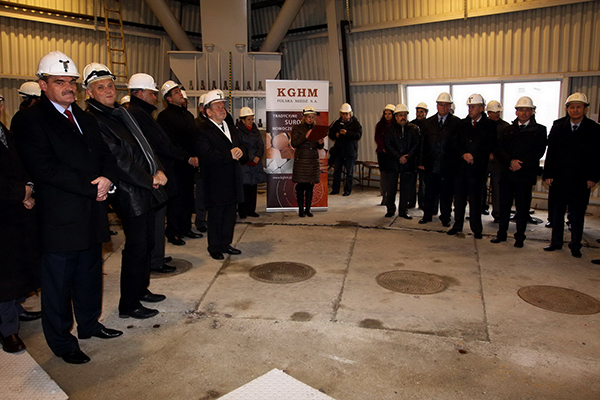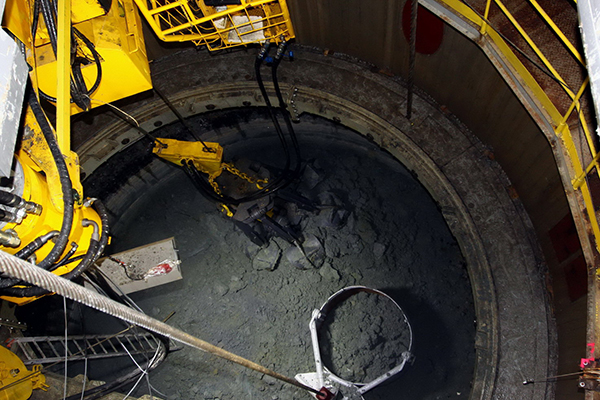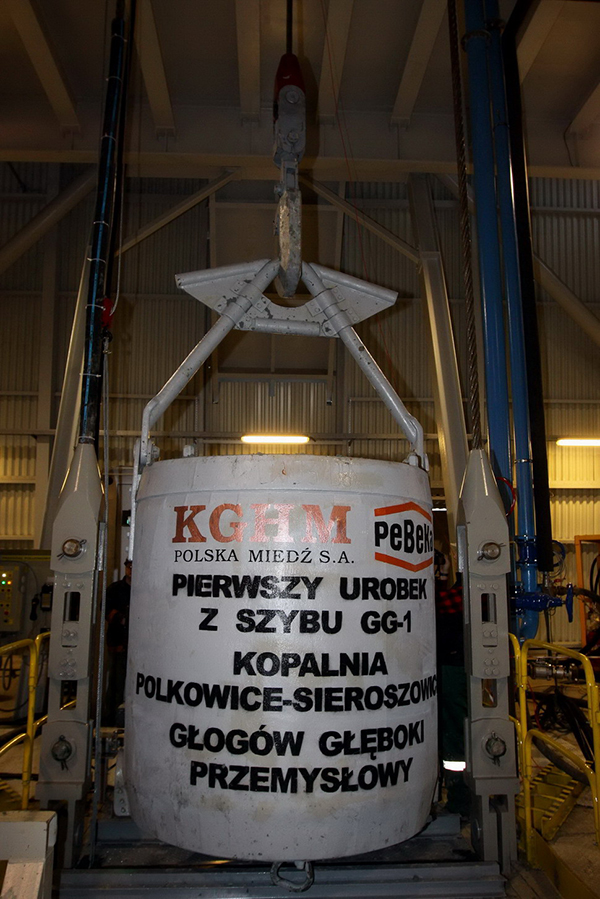The GG-1 shaft is a strategic investment of KGHM and is the deepest shaft in the Polish Copper Belt. The first bucket of rock hoisted from the GG-1 shaft was ceremoniously raised on Wednesday, 11 December 2013. GG-1 enables access to the copper ore resources at depths of below 1200 m, in the region of Deep Głogów (Głogów Głęboki Przemysłowy). This is the 31st shaft built by KGHM. It is located in the village of Kwielice in the Grębocice municipality.
The preparations for sinking the shaft, begun in 2010, are carried out in stages and will continue until 2019. The GG-1 shaft will reach a depth of 1,340 meters and will have an external shaft diameter of 7.5 meters. The hoisting tower will be 45.5 meters in height.
"The GG-1 shaft is a strategic investment of KGHM. This will be a ventilation shaft for intake air. The ventilation provided will enable operations in the Deep Głogów area at depths which a few decades ago were inaccesible,"says Herbert Wirth, President of KGHM. "We have long since crossed the psychological threshold of 1,000 meters, and now we are talking about a depth of 1,400, and even 1,600 meters."

The sinking of this shaft required application of the rock mass freezing technique – this is advanced technology and is a pioneer method perfected over many decades by our subsidiary PeBeKa, the general contractor for the investment. Work related to commencing the process of freezing the rock mass was carried out in the summer of 2012. At that time the freezing units station was prepared, with a cooling capacity of over 3 900 kW.

In February 2013 began one of the key construction stages: freezing of the rock mass prior to sinking the shaft. 1.8 tonnes of ammonia (the freezing element) were supplied to the freezing unit. Initially the compressed cooling brine had a temperature of minus 15 degrees Celcius; around two months later it had reached 30 degrees below freezing. Installation of the hoisting tower began in August 2012. Assembly of the shaft sinking equipment, i.e. equipment for filling and unloading the buckets to transport the rock, proceeded simultaneously with installation of the steel construction. For handling the large steel elements a 55-meter crane with a 10-tonne lifting capacity was used, and for transporting even heavier parts, an impressive, 200-tonne crane was put into service. The process of assembling equipment directly used in sinking the shaft began at the end of July this year.
This will be the deepest of the 31 shafts in the Copper Belt.

Brief facts about the GG-1 shaft:
- 31st shaft in the Copper Belt
- target depth: 1,340.7 m
- external shaft diameter: 7.5 m.
- total height of the GG-1 tower: 45.5 m.
- first bucket of rock extracted: December 2013
- planned date for completion of sinking: 2019





